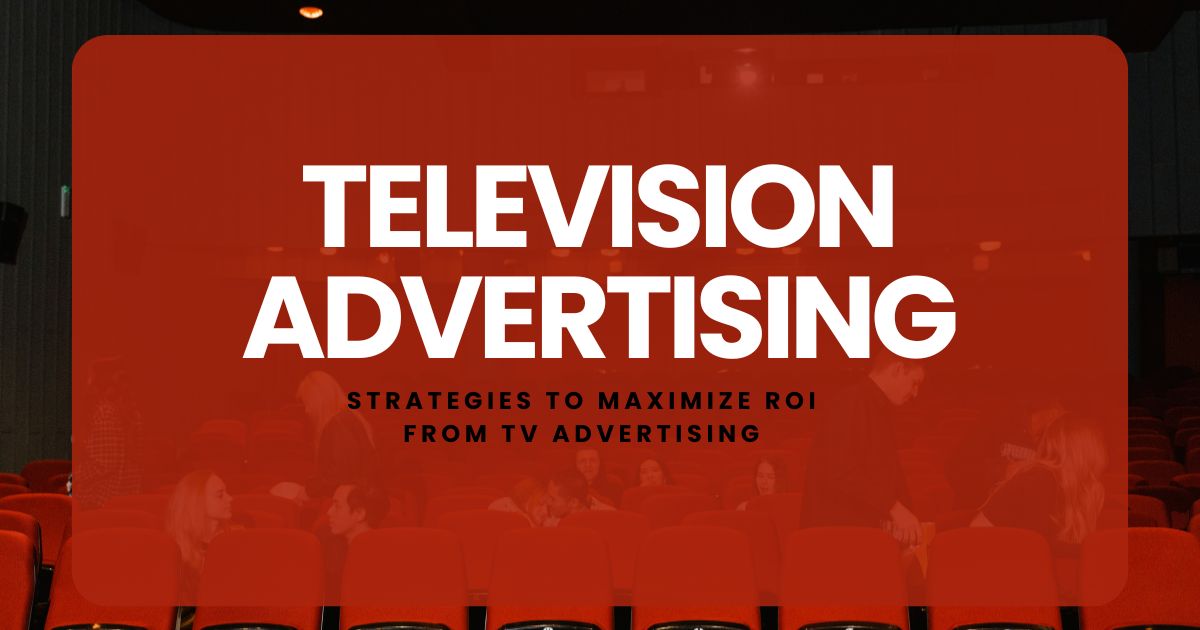Digital advertising seems to dominate every marketing conversation. With endless talk of social media campaigns, SEO, and pay-per-click ads, it’s easy to think that traditional advertising methods are a thing of the past. Many marketers have shifted their budgets online, chasing the promise of precise targeting and measurable ROI. But to declare television advertising obsolete would be a significant mistake.
Despite the rise of streaming services and online content, TV remains a powerhouse for building brands and reaching a massive audience. Its ability to create emotional connections and establish credibility is unparalleled. While digital ads are often fleeting and easily ignored, a well-crafted TV commercial can become a memorable cultural moment.
This post will explore the enduring power of television advertising. We will look at why it continues to deliver significant returns, how it builds trust in a way digital platforms struggle to match, and why it should still be a key component of a modern, integrated marketing strategy. By understanding its unique strengths, you can leverage TV to give your brand a competitive edge that digital alone cannot provide.
The Unmatched Reach of Television
One of the most significant advantages of television advertising is its massive reach. While digital platforms have fragmented audiences into countless niches, TV still has the power to bring millions of people together at once. Live events like the Super Bowl, the Oscars, or major sporting finals draw enormous, engaged audiences that are nearly impossible to replicate online.
- Mass Audience Access: Nielsen data consistently shows that traditional TV reaches a higher percentage of the U.S. population daily than any other platform. This broad exposure is invaluable for brands looking to build widespread awareness quickly.
- Captive Audiences: During major live broadcasts, viewers are highly engaged and less likely to switch channels or look at their phones. This “lean-in” viewing experience means your message is more likely to be absorbed and remembered. For a new product launch or a major brand announcement, no other medium guarantees this level of simultaneous attention.
While digital advertising excels at targeting specific demographics, television advertising excels at creating a shared cultural experience. When a commercial airs during a popular show, it becomes part of a collective conversation, amplifying its impact far beyond the initial broadcast.

Building Trust and Credibility Through the Big Screen
In an online world filled with pop-up ads, sponsored content, and influencer marketing, consumer skepticism is at an all-time high. Digital ads can feel intrusive and are often associated with scams or low-quality products. Television advertising, on the other hand, operates in a more regulated and established environment, which inherently lends it a greater sense of trust and legitimacy.
The investment required to produce and air a TV commercial sends a powerful signal to consumers. It suggests that a company is stable, successful, and confident enough in its product to invest in high-cost advertising. This “barrier to entry” creates a halo effect, making brands that appear on TV seem more credible and trustworthy than their online-only counterparts. Think about it: a professionally produced ad on a major network carries more weight than a targeted ad that appears in a social media feed. This perceived quality and commitment can be a deciding factor for consumers when making a purchase.
Creating Lasting Emotional Connections
Television is a uniquely emotional medium. The combination of moving images, sound, and storytelling allows brands to create powerful narratives that resonate deeply with viewers. A 30-second commercial can tell a story that makes you laugh, cry, or feel inspired. This emotional engagement is what turns passive viewers into loyal customers.
- The Power of Storytelling: Successful TV ads don’t just sell a product; they sell an emotion, a lifestyle, or an idea. Brands like Nike, Coca-Cola, and Apple have mastered the art of using television advertising to build an emotional bond with their audience, creating brand loyalty that lasts for generations.
- Multi-Sensory Impact: Unlike static digital ads, TV commercials engage both sight and sound, creating a more immersive and memorable experience. The right music, compelling visuals, and a powerful voiceover can work together to create an ad that sticks in the viewer’s mind long after it’s over. This multi-sensory approach is far more effective at building brand recall than most digital formats.

TV and Digital: A Powerful Partnership
The debate shouldn’t be about television versus digital, but rather how they can work together. A modern, effective marketing strategy integrates both platforms to maximize impact. Television advertising is incredibly effective at driving top-of-funnel awareness, creating brand recognition, and building trust. Once that foundation is laid, digital advertising can be used for more targeted, lower-funnel activities.
For example, a viewer might see a compelling TV ad for a new car. Intrigued, they then use their phone or laptop to search for the brand online. This is where digital marketing takes over, guiding the potential customer with search ads, detailed website content, and retargeting campaigns. This “second screen” phenomenon is now a common consumer behavior. TV creates the initial spark of interest, and digital channels help fan that spark into a flame. By using both, brands can create a seamless customer journey that guides consumers from awareness to conversion.
Your Next Steps with Television Advertising
Dismissing television advertising in the digital age is a missed opportunity. Its unparalleled reach, ability to build trust, and power to create emotional connections make it a vital tool for any brand looking to achieve significant growth. While digital marketing offers precision and measurability, TV provides the scale and cultural impact needed to build a household name.
By integrating television advertising into a broader marketing strategy, businesses can create a powerful synergy that drives both brand awareness and sales. The most successful brands of the future will not be the ones that choose between traditional and digital, but the ones that master both.

Frequently Asked Questions
Is television advertising still effective with the rise of streaming services?
Yes, it is. While streaming has changed viewing habits, live television—especially for sports, news, and major events—still draws massive audiences. Furthermore, advertising on connected TV (CTV) platforms like Hulu and YouTube TV combines the big-screen impact of traditional TV with the targeting capabilities of digital advertising, offering a powerful new avenue for marketers.
Isn’t television advertising too expensive for small businesses?
While national television advertising campaigns can be costly, local TV advertising is often much more affordable. Local stations offer businesses the chance to reach a specific geographic area without the high price tag of a national campaign. This can be a highly effective way for small and medium-sized businesses to build brand awareness in their communities.
How can I measure the ROI of a television advertising campaign?
Measuring the ROI of television advertising has become much more sophisticated. Marketers can now use methods like dedicated URLs, unique promo codes, and post-campaign surveys to track the impact of their ads. Advanced analytics tools can also correlate spikes in website traffic, social media mentions, and sales with the times that TV commercials are aired, providing a clearer picture of their effectiveness.





